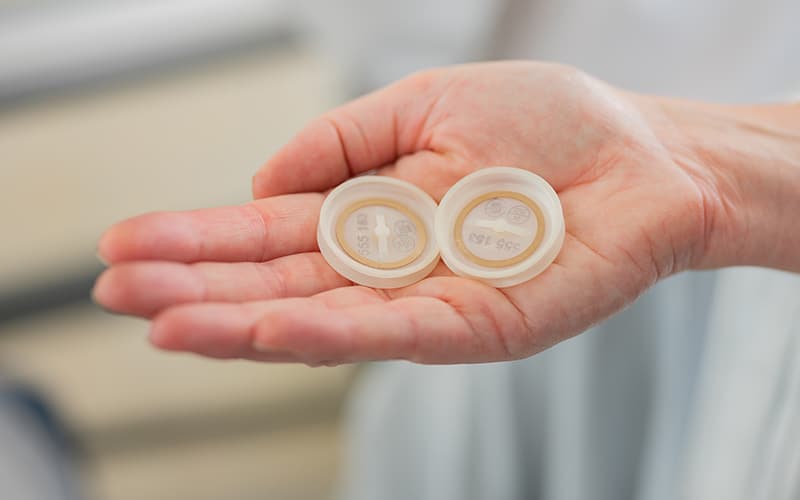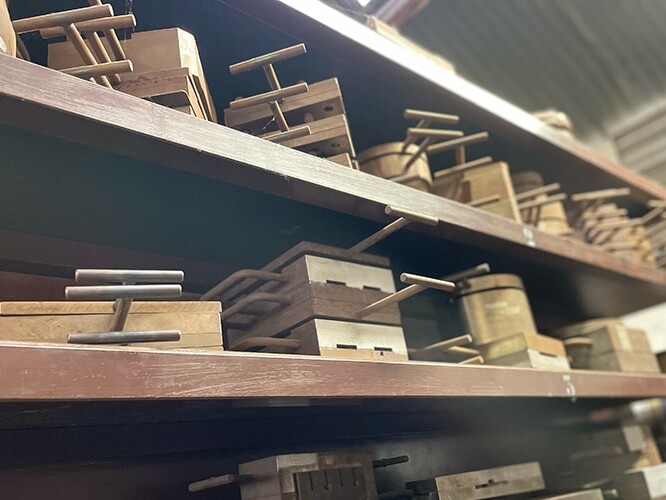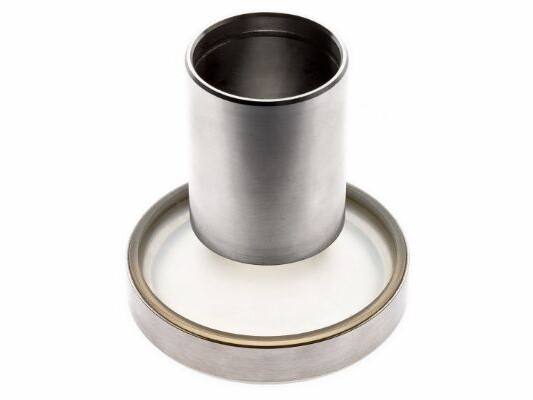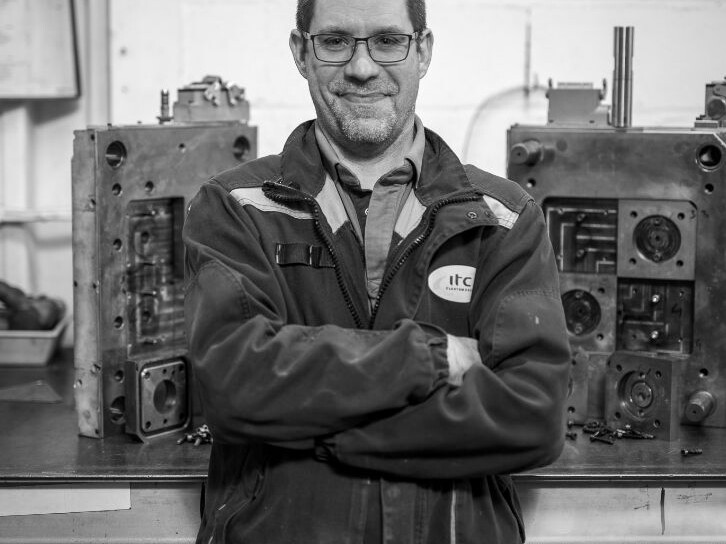
What is transfer molding?
For the manufacture of individual and small series of elastomer elements, ITC uses the transfer molding process during which a blank of non-crosslinked rubber mixture is introduced into a heated transfer chamber.
When the mold closes, the material is transferred into the cavities of the tooling and the part is thus formed.
The transfer molding process is favored in the manufacture of complex multi-material parts with adhesion or for parts overmolded on metal inserts.
Transfer molding at ITC
The transfer molding process requires specific tooling generally composed of three parts:
- A lower plate for receiving metal or other material inserts.
- An intermediate part called a transfer chamber allowing the raw elastomeric material to be deposited and injected into the lower part of the mold via channels called transfer tips.
- An upper plate, commonly called the piston, to close the tool and perform compression.


Under the effect of the closing pressure of the tool and the temperature, the material liquefies, passes through the holes in the intermediate plate, fills the cavities and vulcanizes to produce a perfect overmolding.
All parts made by ITC Elastomères comply at least with the dimensional tolerances of standard ISO 3302 quality M1 to M4. Depending on our customers’ request, specific tolerance requirements can be applied.
Transfer molding requires several manual operations prior to vulcanization (cooking), such as the preparation of raw mixture blanks which are then positioned on the transfer chamber before compression.
The duration of the molding cycle is linked to the nature of the elastomer and the geometry of the part.
Processed materials: all types of elastomers – Natural Rubber, EPDM, Polychloroprene, Nitrile, SBR, Butyl, FKM, FFKM, Silicone…
Call our team to assist you in the production of your molded part.
